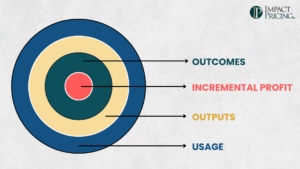Question: One of the biggest things that I struggle with in this endeavor is the level of adjustment required to normalize prices. I equate our current pricing schemes to a leg that has been broken for ten years. I’ve been with the company for 18 months and convinced our team that this is a necessary evil. We must set the broken leg. Our list price is 30-40% high, causing us to contract 75% of our business. This leads to, for example, one item being sold at 131 different price points with up to a 250% variance.
Keep in mind these are commodity products. It makes for an administrative nightmare. Which leads to the ultimate point. Right-sizing “the price” to market equilibrium would mean adjusting some of our clients by 15-25% in one effort. I believe this will cause a ripple effect of lost business (or lost margin) and have proposed a phased sequential increase (or decrease over 2-3 years. Others believe it’s best to pull the band-aid off at once. Love to hear your thoughts. Adam
Answer: Thanks for the question, Adam. I have 3 big points I want to make, the last is the answer to your question.
Pricing Variance
First, I’m going to translate your sentence “Keep in mind these are commodity products.” to mean we have a lot of competition. I despise the word commodity. If you truly sell a commodity, there is no pricing. There is only a spot market. And even then, there are probably ways to add and capture value. If you buy a gold coin (a commodity?) from Blanchard and from Apmex, you pay more at Blanchard. Why? They have more hands-on service. They have a nicer web site.
I don’t really know, but they get away with it. Any company who thinks they sell a commodity has given up all pricing decision making. Instead, think of how you add more value to sub-segments of the market.
OK, now that rant is over. Second, pricing variance in and of itself is not a bad thing. The real question: is it justified? Companies that set a high list price and let salespeople negotiate discounts are executing a form of price segmentation, a good thing.
For a moment, assume your salespeople are great negotiators and amazing at communicating value. They are in the best position to know how much value the buyer will receive and therefore how much they might pay. I LOVE this.
The problem is that most salespeople are both horrible at communicating value and they are not good negotiators. Purchasing people get much more training on negotiating than salespeople do.
They also do it more often. It’s obvious why purchasing people tend to be great negotiators. This implies that the discounts that you’ve given over time are probably not optimal.
Finally (and third) is my recommendation. I would not rip the band-aid off unless there is a really good reason besides getting the pain over with quickly. Instead, consider the following:
Step 1. Try to figure out why some companies are willing to pay more than others? The ones who pay you the most, why? What do they have in common? Same with the ones who pay the least. You may have segments in your market that you do or could serve better than your competitors.
Step 2. Take a small subset of the ones that you think pay too little and raise their price. Watch closely how many you lose. Compare the increase in profit from the ones who stayed with the lost profit from the ones who left. Was it substantially bigger? Then, roll this plan out to more customers who pay too little.
Step 3. Don’t lower the prices on the ones who pay too much. Instead, watch them. When you lose one, find out why. Did they switch to a competitor because of the price? If so, then maybe you need to adjust the prices down as contracts expire. If not, let sleeping dogs lie.
There are two justifications for lowering the prices for these customers. One reason could be that you lose too many to the competition when contracts expire. The second is that the cost of managing the contracts for individual buyers may exceed the additional margin gained from the higher prices those customers pay.
Overall I’m a fan of price variance. If you assume your salespeople have similar levels of competence, then the prices your customers pay are probably related to the value they receive. This gives you data to explore as a potential explanation for your buyers’ willingness to pay.
Good luck Adam and let us know how it goes.
**NOTE: Mark Stiving has an active LinkedIn community, where he participates in conversations and answers questions. Each week, he creates a blog post for the top question. If you have a question, head over to LinkedIn to communicate directly with Mark.**














